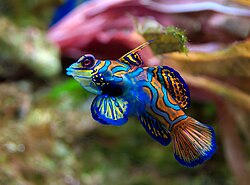This article includes a list of references, related reading, or external links, but its sources remain unclear because it lacks inline citations .(October 2017) |

Pacific Abyss is a three-part series on British television's (BBC1), which first aired in Sunday 17 August 2008. It is hosted by Kate Humble, Mike Smart and Mike deGruy with filming beginning in April/May 2007.
Contents
- Episode list
- 1. The Ghosts of Chuuk Lagoon
- 2. In Search of Giants
- 3. Into The Abyss
- References
- External links
It is an underwater wildlife series which takes viewers into a 2,000 miles (3,200 km) adventure across the Pacific with a team of natural history filmmakers and deep water marine biologists. A 30-strong team took part in the expedition, to search for new species in the remote and unexplored areas. Micronesia has some of the deepest ocean trenches on the planet, with sheer walls often a few hundred metres from the islands' shores. These are the perfect locations for the search for new fish species. The teams explore World War II wrecks, steep drop offs and deep caverns.
Using the latest in scuba technology, the divers enter the least explored region of the ocean – the 'Twilight Zone', an area between 60 and 150 metres, including ROVs and a Newtsuit, allowing for extremely deep dives, as deep as 225 metres (738 ft), several new species were discovered.
As the expedition team near the end of their journey across Micronesia, it's a race against time for the extreme deep divers as they continue their search for new species, exploring different islands like the Rock Islands of Palau. The "Newtsuit" is a feat of submarine engineering – a bright yellow one-man submersible that Mike DeGruy has to master before he can venture even deeper into the Pacific abyss.
Team member Jo Ruxdon who described the whole series as "something new" in that people have never been able to dive to such depths in such remote places.